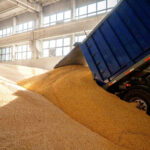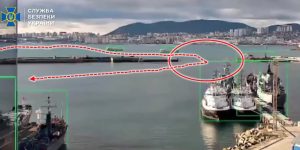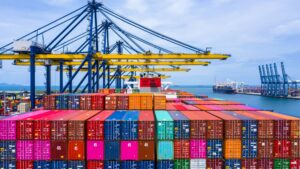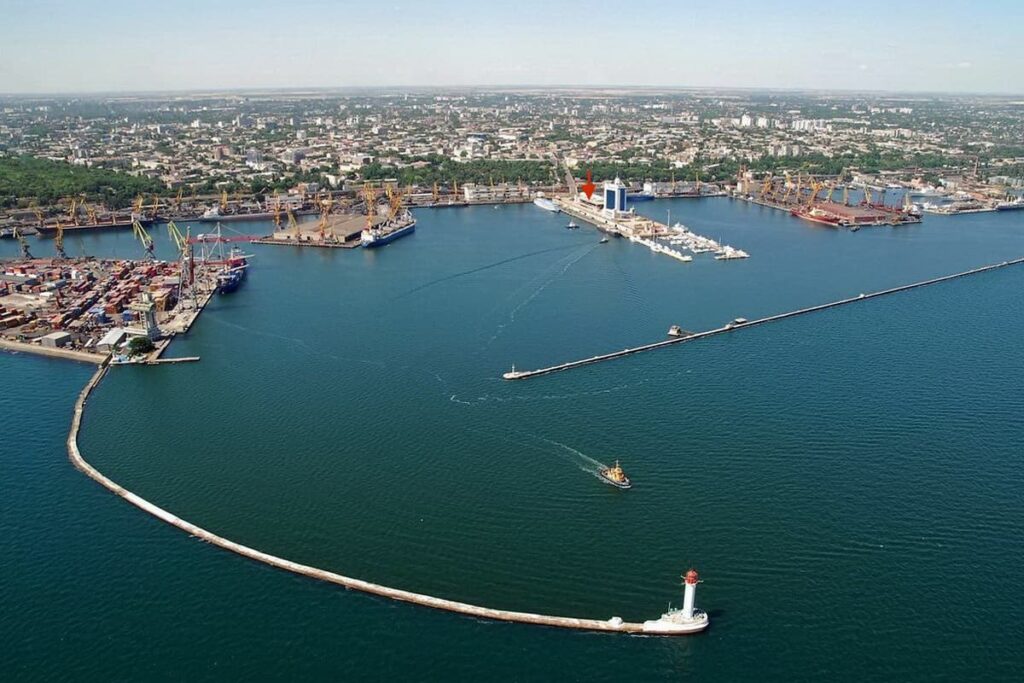Three months of war: how Ukraine trades with the world and transport goods
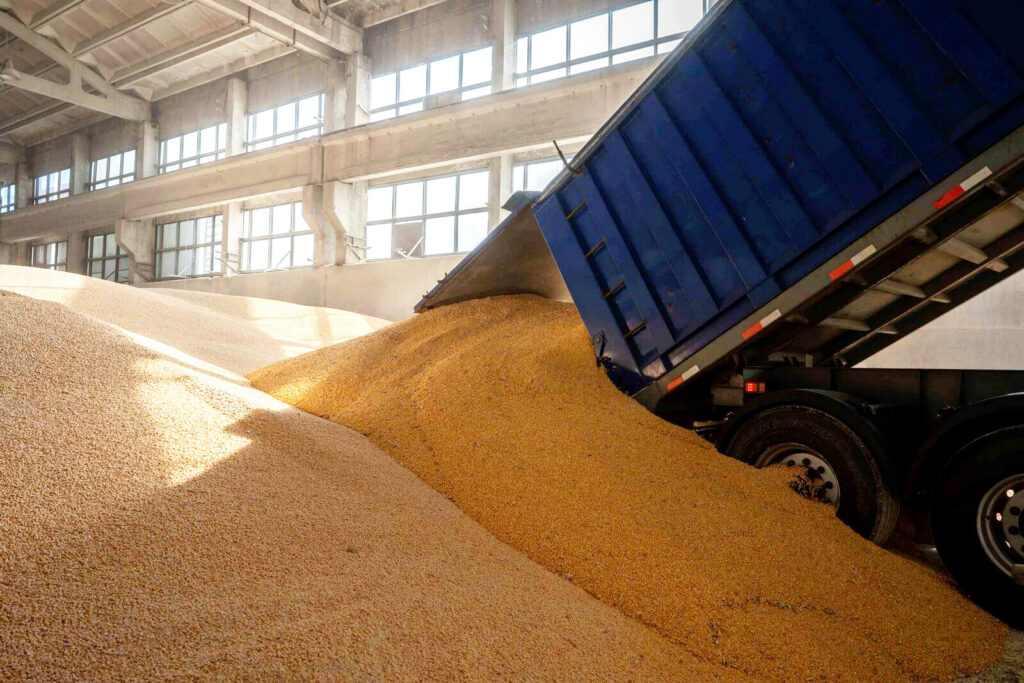
Before the start of the full-scale war, 75% of Ukraine’s foreign trade was carried out at sea ports. From February 24, 2022, they are all blocked. However, it was not a verdict. On the contrary, we see that companies have begun to look for alternative ways to establish logistics chains.
Can rail and road transport replace sea transport? What is the government doing to help exporters export products, and how did the war change Ukrainian trade? This was discussed on May 18 during the online discussion of the Southern Ukrainian office of the European Business Association “Logistics and international trade in Ukraine in conditions of war”.

Container logistics: wartime challenges and the search for new opportunities
Since February, we as a country have been blocked from access to the sea, and it is impossible to rebuild our sea logistics to land logistics, as they are concentrated around the ports. Therefore, the question arises: how to direct our export and import flows to land borders?
If we summarize the main challenges that the container business in Ukraine faced in the first two weeks after the start of the war, one of the first was the search for alternative ways of delivery of imported containers that were on their way to Ukraine. Unfortunately, as of the beginning of the war, thousands of import containers were blocked. However, by mid-March, most industry participants were mobilized to find alternative solutions.
Thus, several ways of delivering these cargoes from the ports of Constanta, Gdańsk and Gdynia emerged. Since initially there were no scheduled trains connecting these ports with Ukraine, in particular with the west, the focus was on road transport. But even here the companies faced a shortage of cars and drivers. The situation improved over time, with the help of the Ministry of Infrastructure, and today there is no major problem with road transport.
Regarding rail transport, container lines faced the lack of scheduled trains from Constanta. But there were other technical problems, such as the different track widths in Ukraine and Europe.
Despite this, a solution was found. In particular, the Western Terminal launched a regular train from Ternopil to Constanta — this helped to take out many containers of particularly critical imports and essential products.
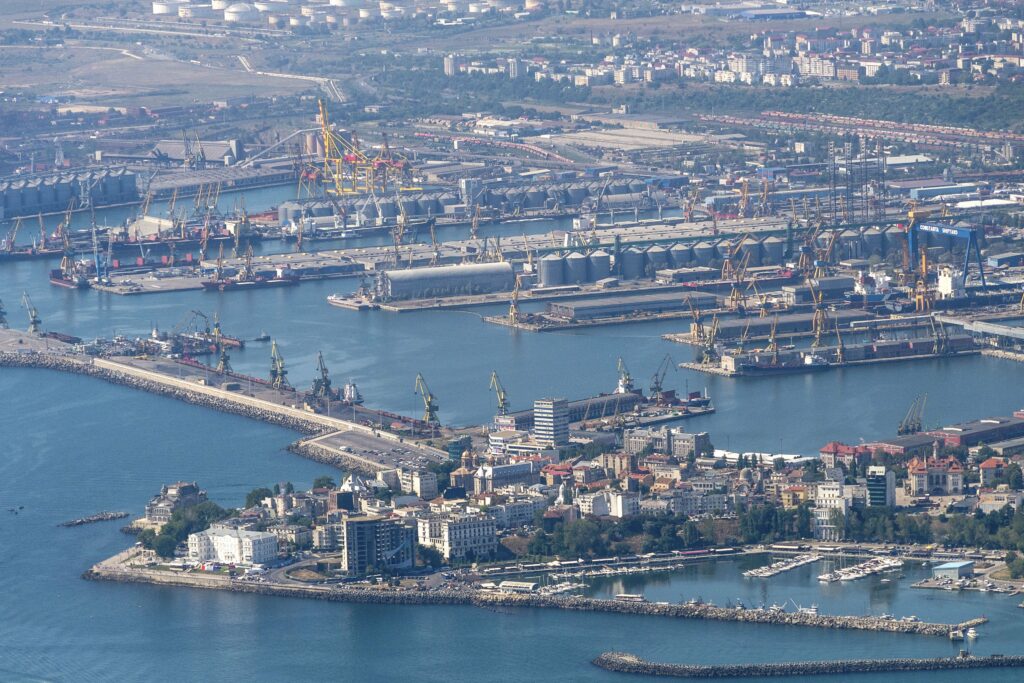
The next problem occurred during transshipment in the port of Constanta. This port clearly did not expect such volumes and, accordingly, faced congestion. For example, the DP World terminal is 80% overloaded, and for several weeks in a row companies are trying to solve this problem. The situation worsened and the workload of the customs service increased. However, there is hope, because the member companies of the European Business Association continue to look for possible alternatives and work despite all the above-mentioned difficulties.
“We are working with various partners to provide alternative routes. We identified several terminals from them. We are considering destinations to Romania, Slovakia and Hungary. Today, we have a lot of export containers that need to be delivered to the recipients. We also see that in the near future we will face a shortage of railway infrastructure, namely regular route trains to Gdansk, Gdynia and Konstanta.
Regarding exports: As containerized imports have fallen sharply in volume, additional problems are related to the lack of export equipment. We see a great demand for the export of agricultural goods, however, the number of containers in circulation is insufficient to ensure normal volumes of exports from Ukraine. Also, we together with the head office are considering the possibility of launching new import bookings in order to increase the amount of imports coming from Ukraine and provide our customers with this opportunity. If I go back to the issue of the early days, a very large volume of imports were unloaded at other ports around the world. After all, first of all, the clients could not understand what to do with these cargoes at first. Secondly, there were very high costs for forwarding these cargoes to other countries,” said Rashid Buda, a member of the Coordination Council of the Association in Odesa, the General Director of MSC Ukraine during his speech.
Artur Nicevych, Chairman of the Legal Committee of the Association in Odesa, partner of Interlegal, moderator of the event, commented that over many years, Ukrainian clients have become accustomed to the “super flexibility” and loyalty of logistics market participants. To compare, if we take the example of the port of Constanta, the reality is different there: both in terms of deposits, and in customs formalities, and in terms of operational processing of requests, etc.
Grain logistics: main changes and news on the market
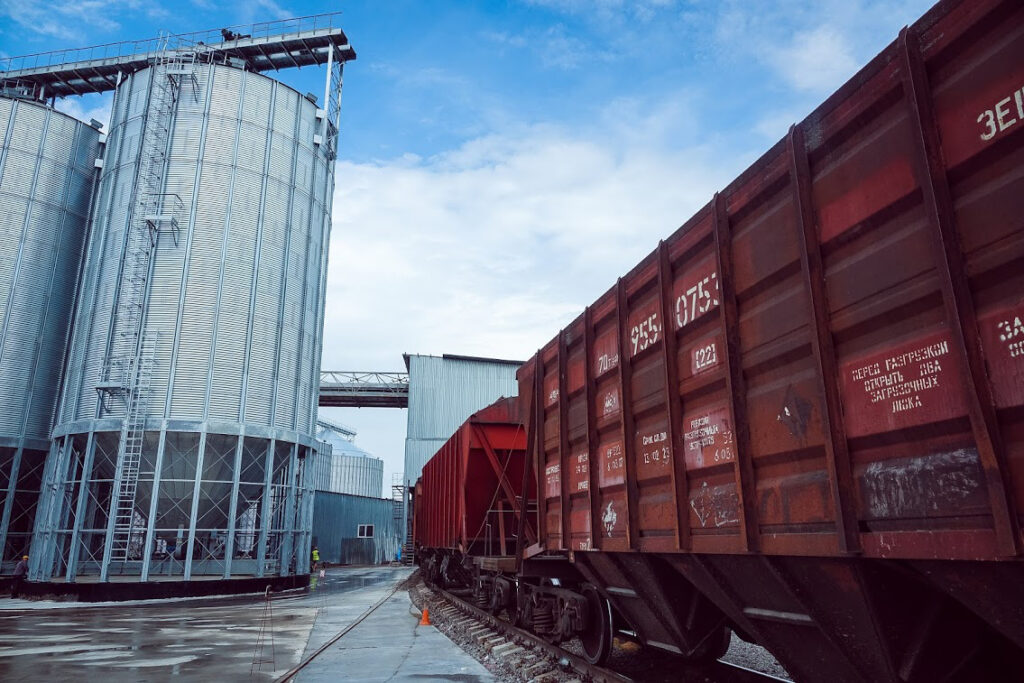
According to the statistics of JSC “Ukrzaliznytsia”, due to the fact that more than 80 production enterprises in Ukraine stopped their work with the beginning of the war, domestic transportation of goods by railway also stopped. The second blow to the railway industry was the blocking of seaports. The remaining capacities provide only a tenth of the pre-war transshipment. Therefore, external transportation was also lost.
“Ukrzaliznytsia” works as much as possible to load the goods to the selected places using railway tracks. Among the possible alternatives is the use of border rail crossings with five European countries. If we talk about agricultural products, in April “Ukrzaliznytsia” reached a volume of 640-650 thousand tons per month.
However, according to Valery Tkachev, deputy director of the Department of Commercial Work of “Ukrzaliznytsia”, the business still unevenly uses all available border crossings. As a rule, companies go first to those border crossings, where historically there was a large volume of transportation and everything is set up. Therefore, there is a task for business: to build new logistics chains as soon as possible and to use all existing border crossings as efficiently as possible. The problem with bureaucratic procedures also complicates the situation. After all, there is border control on the border, there are customs, phytosanitary, veterinary, etc., and they work on one side of the border and on the other. A lot of work is being done at the legislative level to solve this issue.
Unfortunately, the railway infrastructure can transport only limited volumes of goods from Ukraine to the EU. To increase the capacity of border crossings in accordance with the needs of the economy, systematic work is required: the development of existing terminals, the construction of new ones, the creation of mobile transshipment points, the increase of the number of narrow-gauge trolleys and the involvement of an additional wagon fleet of carriers on the narrow path, simplification of border crossing procedures, etc.
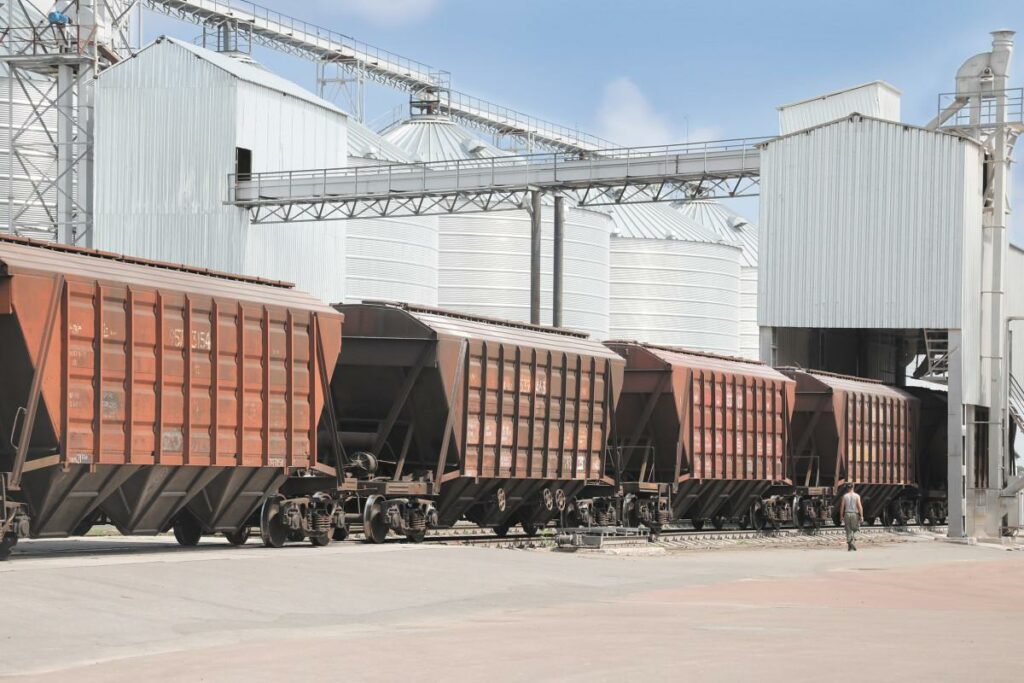
Mykola Gorbachev, director of Soufflet Group in Ukraine, president of UZA, told more about how Ukrainian grain exports have changed and why it is important to unblock Black Sea ports.
According to him, the war made adjustments to Ukraine’s export capabilities. After all, in the pre-war period, it was possible to export about 6 million tons per month through the ports of the Black Sea. At present, export by alternative routes is only slightly more than 1 million tons, that is, it has decreased by 6 times. Regarding the alternative options for export, which Ukraine is working on together with Poland and the Baltic countries: they will not allow to significantly increase exports.
The architecture of Europe is built on completely different principles. In particular, there is a lack of floating cranes, and the piers are not designed for such a cargo flow. Therefore, it is extremely important to review industrial trade. It should now consist in bringing the maximum amount of goods to the final consumer in Europe. In addition, thanks to the communication from the Ministry of Economy and the Ministry of Agrarian Policy and on the basis of the recommendations written by EVA and UZA, the effectiveness of decisions made in wartime increases.
Understanding the threat posed by food shortages on the global market, as well as the importance of grain exports for Ukraine’s economy, our international partners are trying to help. Thus, the EU is developing its grain export support plan, which is designed to eliminate bureaucratic and technical problems that arise at the border with EU countries when exporting grain from Ukraine. Regarding the unblocking of ports, the grain industry does not expect this until the end of 2022, although the issue is already being discussed quite actively at all levels. The only correct way out is to ensure international escorting and unblocking of Ukrainian ports.
Back in April, the question of the possible opening of Ukrainian ports was not on the agenda at all, but now we can say that the situation has changed radically. The United Nations, the International Maritime Organization, the UN World Food Program and the European Union are all involved in its deliberations. But no one can currently provide any tangible time frame for when this will happen. Philip Joseph Sweens, Managing Director of HHLA GmbH, spoke during the EBA Global Outlook Webinar “Economic Front”, who noted that the ports should not be unblocked until the end of the year. After all, there is also the issue of maritime security; it is important who will take responsibility for demining the sea and escorting ships. It will be unrealistic for Ukraine to carry out a convoy on its own.
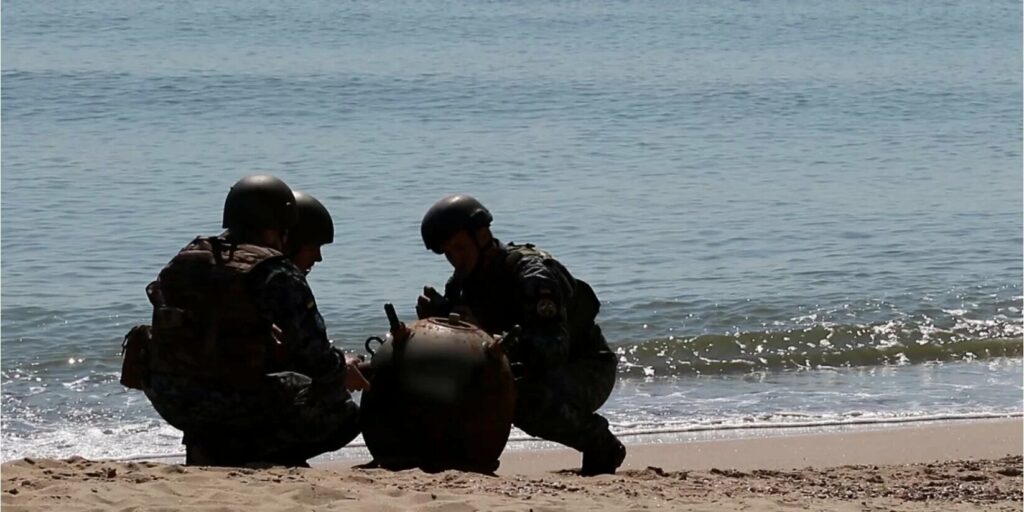
What are the problems with the cargo heading to Ukraine, and with the one, which is impossible to take out from its territory?
Karina Horova, a senior lawyer at Interlegal, spoke about them in more detail. Yes, problems with cargo going to/from Ukraine can be conditionally divided into two parts. There are difficulties caused by logistics, and there are difficulties associated with the adoption of a number of restrictive regulations. In the first days of the invasion, ship calls to Ukrainian ports were canceled, and cargo flows were redirected to other ports in Romania and Turkey, the capacities of which were not ready for this.
This caused delays in the customs clearance of the cargo, increased storage rates. In addition, each country has its own local regulation of the order of delivery of cargo, registration of transit cargo, which may differ from what usually worked in Ukraine. Finally, in some cases it was necessary to reissue the bills of lading for the cargo, to change the consignees to local logistics agents with whom cooperation had not been established before. In addition, even after a few months, there are complaints from freight forwarders about the non-transparent policy of line pricing and invoicing with rates for services that are not fully understood. There were separate complaints about the efficiency of the work of the carriers’ agents in the ports. As an example, the process of changing the port of destination, which currently takes several weeks, is cited. All this time, cargo owners are forced to pay for storage.
Also, in mid-March, the Order of the Commander-in-Chief of the Armed Forces of Ukraine was issued on the forced alienation of the property (cargo) of a number of legal entities that are in the custody of container terminals. Of course, this caused concern for both the terminals and the freight forwarders who placed the cargo there. However, this procedure is legal in wartime conditions. At the same time, the task of both freight forwarders and terminals is to protect themselves from possible claims of cargo owners and ensure compliance with the alienation procedure.
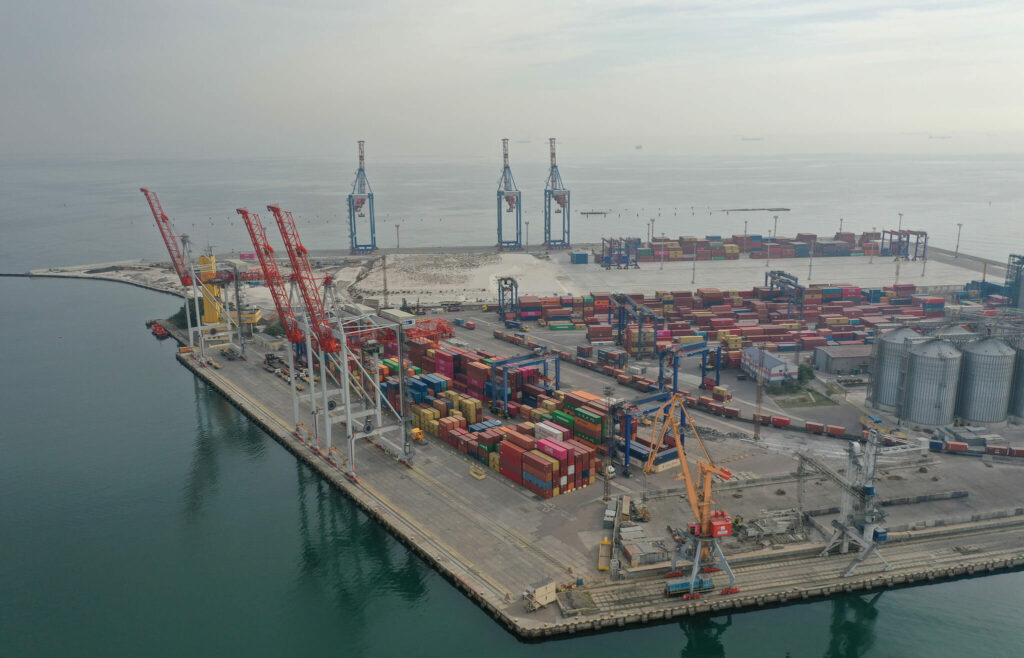
Regarding the legal restrictions that complicate the export and import processes, a number of regulations were adopted, which essentially established new import/export rules. In particular, on February 29, a Resolution of the Cabinet of Ministers of Ukraine was adopted, which approved the list of goods whose export is subject to licensing and quotas. There are a number of products for which zero quotas have been established, that is, in fact, a ban on the export of certain agricultural products. These are oats, buckwheat, sugar, salt, some types of fertilizers. Licenses are required for a number of goods that can be exported. In addition, restrictions on payments in foreign currency were introduced, which, of course, affects the ability to import goods, with the exception of critical imports.
Ukraine continues to work on increasing the capacity to export goods by land in order to resume trade with international partners while the russian invaders block the sea. After all, the only way out is to find alternatives in the existing conditions and, despite the war, to support and stimulate the economy of Ukraine.
